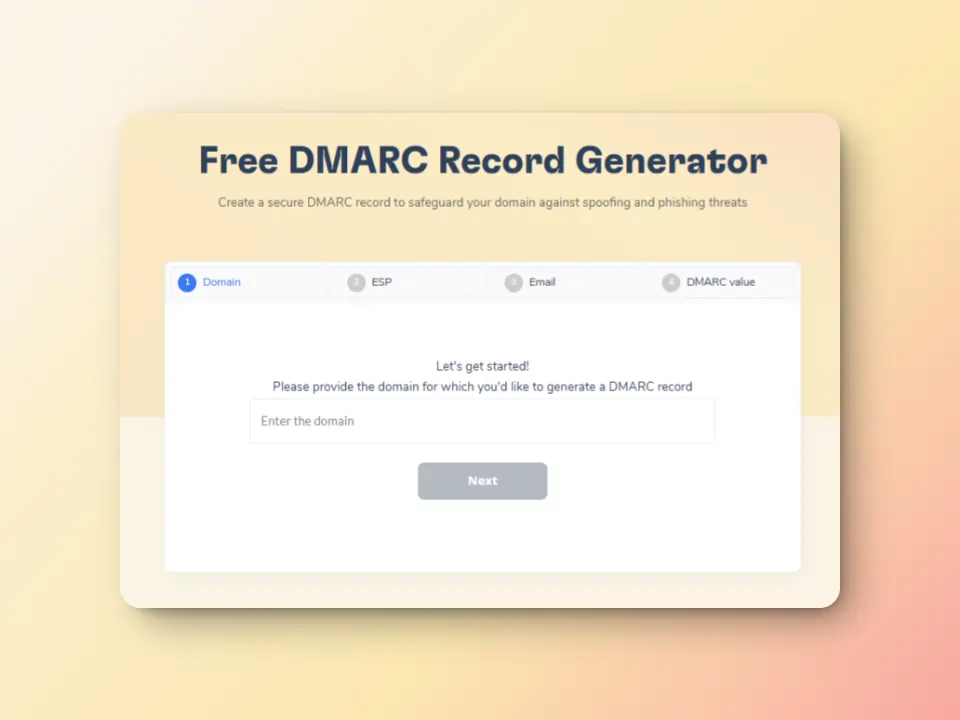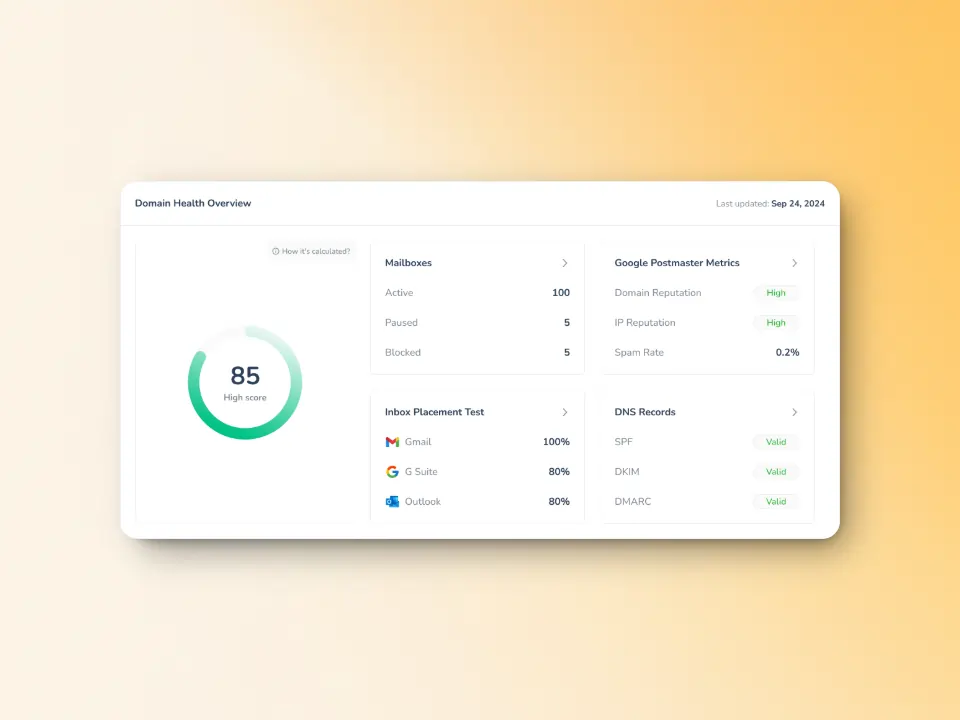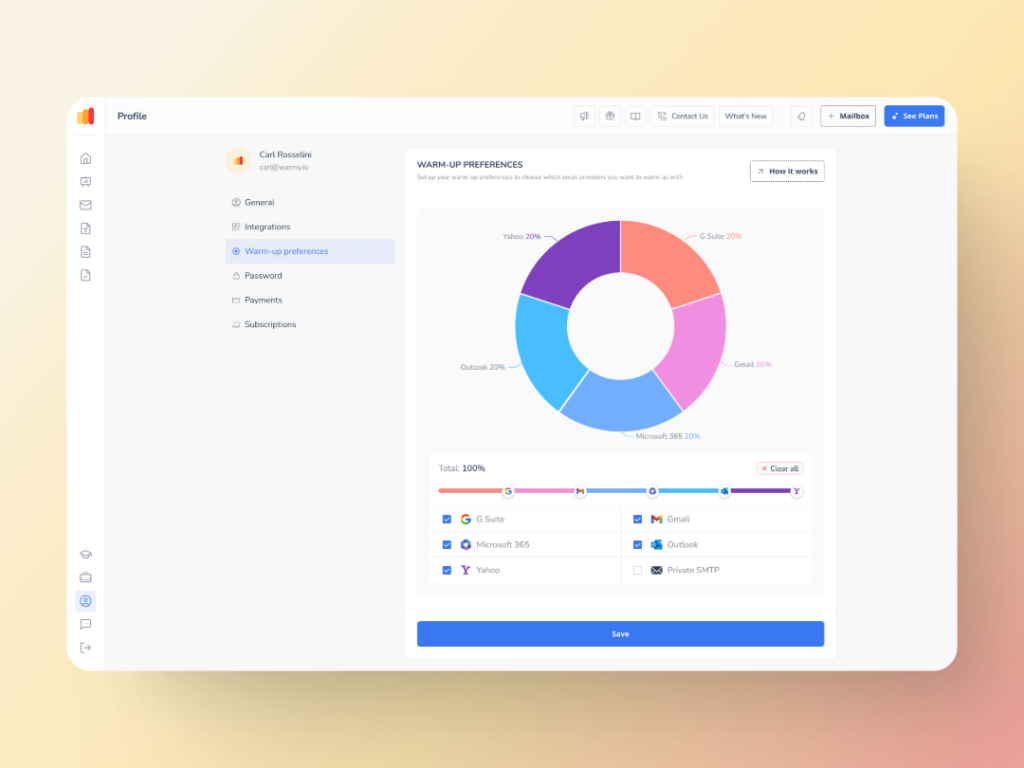You spend a lot of time perfecting your email content. You’re sure your recipients will want to book a call with you after reading your email. So you excitedly hit ‘Send.’
A couple of days come and go and you are flustered at the absence of any scheduled meetings or calls—and you don’t understand what happened.
Does this sound familiar? Perhaps you’ve been in such a position. Maybe you find yourself there now
Well, you’re in the right place.
There’s a big chance your problems have something to do with your email deliverability.
But before making any move, you ought to be certain. We’ll show you how to do a basic email deliverability test, and share with you some of the metrics that can determine email deliverability and how this affects your email outreach. When you’re finished, you’ll have the tools you need to begin testing your email like a professional.
What is email deliverability testing?
An email deliverability test lets you know just how well your emails land in inboxes. A deliverability test will examine your email’s content, structure, authentication protocols (like SPF, DKIM, and DMARC), along with a bunch of other important things that affect placement inside the inbox.
By running deliverability tests, you can:
- Identify deliverability issues before they hurt your campaigns.
- Monitor your inbox placement and detect if your emails are going to spam or are being blocked
- Enhance sender reputation by verifying correct authentication and adjust email content/frequency.
- Increase email engagement by getting your emails delivered and seen by people.
What happens when you don’t test regularly? Well, you may end up wasting a ton of time coming up with emails that your target audience won’t see anyway—because they’re not even landing in the inboxes.
Key email deliverability metrics to keep an eye on
Numbers tell stories. Before you dive straight into email deliverability testing, you need to understand what specific metrics are telling you.
Inbox placement rate
This refers to the percentage of your emails that land in the target recipients’ inboxes and didn’t land in spam or didn’t bounce. A low inbox placement rate means majority of your emails aren’t making it to the inboxes—they are probably being filtered or rejected by email service providers (ESPs).
In essence, your inbox placement rate gives you an idea of how well email service providers trust your domain.Just to give you an idea, the global benchmark for inbox placement rate is 83.5% and this has been trending downwards since 2024.
🔖 Related Reading: Inbox Placement Test: Warmy.io’s Solution to Email Spam Challenges
Spam complaint rate
Spam complaints are when recipients mark your emails as spam—a direct message to email service providers that your email or your domain is not welcome. ESPs will take note of this for your upcoming emails. And in the event that this happens regularly, ESPs may end up blacklisting you—hindering your ability to send more emails.
A high spam score damages your sender reputation, which can kill your deliverability.
Sender reputation
Your sender reputation is a rating that email service providers give you which is based on how you go about email sending. Bounce rates, complaint rates, spam trap hits, engagement rates, and many other factors impact your sender score.
If you have a poor sender reputation, you may end up with your emails sent to the spam folder or even blocked. A good reputation, on the other hand, raises the likelihood that your emails will land in the inbox and get read.
Domain alignment
Domain alignment is when the “From” domain in your email matches the domain in the email authentication records (SPF, DKIM, DMARC) used in the email. Correct domain alignment provides evidence to email providers that your email is what it claims to be, and you are who you claim to be. Misalignment can harm your sender reputation, resulting in a lower inbox placement rate.
🔖 Related Reading: SPF, DKIM, and DMARC: What They Are and Why You Should Care
Engagement rates
Opens, click-through rates (CTR) and reply rates show the way recipients are engaging with your emails. Increased engagement shows email service providers that your emails are valuable and wanted. On the other hand, poor engagement can harm your sender reputation and lead to low inbox placement—ESPs will see that your recipients do not find value in what you’re sending.
🔖 Related Reading: Boost Your Email Click-Through Rate and Skyrocket Engagement
How to conduct an email deliverability test with Warmy.io
Step 1: Access Warmy’s free deliverability test
The best part? It’s completely free to test your email deliverability. You don’t need any complicated signups or technical setups to get started. Simply visit Warmy’s Free Email Deliverability Test page to begin your test.
Step 2: Send an email to the addresses provided
Once you’re on the test page, you will see a list of test email addresses. Copy these email addresses. Open your email platform and paste these email addresses in the “To” field.
Send a real email to the addresses provided. It can be a real test email with links, images, and formatting that closely resembles the content of an upcoming campaign. Or you can recycle an existing email campaign to fully mimic the experience your actual recipients would have.
Step 3: Let Warmy work its magic
Wait for around 3-5 minutes. Warmy will generate a deliverability report with key insights like:
- The percentage of emails that landed in the inbox, promotions tab, or spam across various email providers like Gmail, Outlook, and Yahoo.
- Successful deliveries vs failed deliveries
- Whether your domain or IP was found to be listed on any major blacklists
Step 4: Get in-depth results inside the Warmy dashboard
Once the test is complete, you can access the detailed report inside the Warmy dashboard. For Warmy paid users, you get access to even more in-depth data and a full deliverability report, including:
- Email deliverability score: A snapshot of how well your emails are performing.
- DNS Records status: Check if your domain’s authentication records (SPF, DKIM, DMARC) are correctly configured.
- Spam rate: Learn how often your emails are marked as spam.
Warmy’s 7-day free trial means you’ll also be able to access these advanced insights, and you can rerun tests to refine your email strategy.
How Warmy helps you succeed in deliverability beyond testing
Truth be told, the delivery test is just the beginning. Now that you know what’s happening behind the scenes, you can take a more strategic move. Beyond the initial test, Warmy offers a suite of powerful tools designed to help email marketers and senders improve their deliverability.
Check your authentication setup

Email authentication is like a passport for your emails. It confirms that the sender is really the sender and that they are sending from a legitimate domain. Without these authentication protocols or if they are not set up properly, your emails could be tagged as spam even if you are legitimate.
- SPF (Sender Policy Framework): Stops random people from sending emails from your domain, and allows only specific servers to send on your behalf. Warmy’s Free SPF Record Generator helps you create a valid SPF record to prevent unauthorized senders.
- DKIM (DomainKeys Identified Mail): DKIM adds a signature to emails to verify that the content was not altered in transit.
- DMARC (Domain-based Message Authentication, Reporting & Conformance): This protocol tells mail servers how to deal with messages that do not pass SPF or DKIM inspections. With the Free DMARC Record Generator, you can prevent phishing and spoofing attacks, adding an extra layer of security.
Run your cold email content through Warmy’s Template Checker

Even with perfect authentication, your email content can still raise red flags and hurt your deliverability. Warmy’s Template Checker scans your email content for potential spam triggers. These are certain words, formatting errors, or suspicious links that might land your message in the spam folder.
The Chrome Extension for the Template Checker allows senders to analyze emails while you draft them within your platform. You can edit as you go along and ensure your emails are free of spam triggers before you hit ‘Send.’
Monitor comprehensive data via the Domain Health Hub

Warmy’s Domain Health Hub provides you with a complete view of your domain’s health and email performance. With this dashboard, you can easily monitor:
- A domain health score which is extracted from authentication records, blacklist status, and inbox placement tests.
- Comprehensive DNS status checks to validate your SPF, DKIM, DMARC, rDNS, MX, and A records for stronger security.
- if your domain is listed on any blacklists
Implement AI-powered warmup with customizable settings

To improve your email deliverability, you will need to create trust with email providers, and Warmy’s Warmy’s AI-powered email warmup does exactly that. Warmy mimics real email communication by increasing your sending volume steadily and gradually so you don’t set off any spam filters. Warmy supports more than 30 languages, making it great for companies with an international following.
The Warmup Preferences feature enables senders to customize settings for different environments—whether you’re sending to B2B or B2C customers, or if you’re working with different email providers like GSuite, Gmail, M365, Outlook, Yahoo, and Private SMTP.
Maximize deliverability with advanced seed lists

Warmy’s advanced Seed Lists set it apart from traditional warmup tools that rely on fake email interactions. With genuine email addresses from trusted mailboxes, Warmy’s seed lists simulate real interactions with your emails. This not only strengthens your sender reputation but also improves inbox placement.
Warmy now offers an API Endpoint for Established Seed Lists, allowing you to easily manage and configure your seed list splits directly from your system. No more manual updates—automated seed list management saves you time, reduces errors, and ensures accurate data.
Take your email deliverability to the next level with Warmy
Strong email deliverability isn’t just about landing in inboxes. It’s about understanding what makes it successful so you can continue to optimize your strategies. With powerful features, Warmy gives you the tools you need to ensure your emails perform at their best.
Sign up for Warmy today and start your journey toward better inbox placement, higher engagement, and improved sender reputation.











